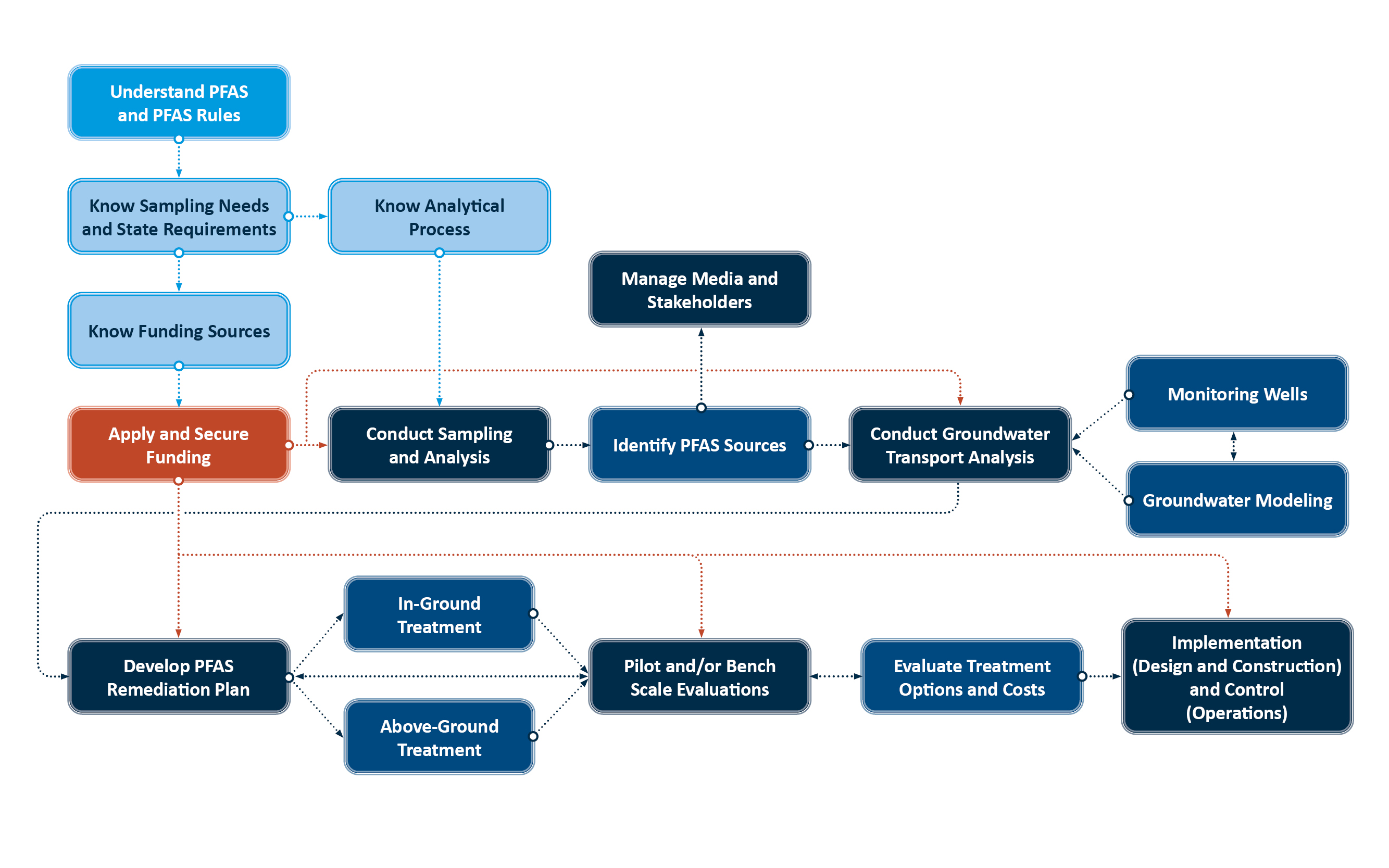What's in Your Water? Removing PFAS from Drinking Water
Posted December 23, 2022
Perfluoroalkyl and polyfluoroalkyl substances (PFAS) are synthetic chemicals widely used to manufacture consumer and industrial products. The roughly 12,000 kinds of PFAS are found in hundreds of products like nonstick pans, waterproof jackets, cosmetics, electronic devices, and grease-proof food packaging. Once heralded for their unique properties, these harmful chemicals have been linked to health issues, including intestinal problems, weakened immune systems, decreased fertility, elevated cholesterol levels, and increased cancer risk.
PFAS is widely known as “forever chemicals” as they do not break down naturally. When left unmanaged, these chemicals seep into nature, eventually contaminating food and water. After exposure, these substances remain in the human body for years. Today, nearly every person in the world, including more than 98% of Americans, has trace levels of PFAS in their blood.
The long-term impacts of PFAS on human health are not fully understood; however, numerous studies have associated the substances with serious health complications. These risks were enough for U.S. manufacturers to voluntarily phase out most uses of perfluorooctanoic acid (PFOA) and perfluorooctane sulfonic acid (PFOS). However, these chemicals’ resistance to degradation means that PFOA and PFOS continue to be found in drinking water and food.
EPA’s Lifetime Drinking Water Health Advisories
In June 2022, the U.S. Environmental Protection Agency (EPA) released four drinking water health advisories as part of its mission to protect public health against PFAS. Adverse health effects are unlikely to occur below these lifetime health advisory levels in parts per trillion (ppt):
- PFOA: 0.004 ppt
- PFOS: 0.02 ppt
- GenX chemicals: 10 ppt
- PFBS: 2,000 ppt
Federal, state, and local agencies can use the information on health risks to take appropriate actions and develop programs to protect against exposure to PFAS. Although these advisories act only as guidelines, the EPA has announced that it will release a proposed National Primary Drinking Water Regulation for PFOA and PFOS by the end of 2022. The proposal would set a non-enforceable Maximum Contaminant Level Goal (MCLG) and a legally enforceable Maximum Contaminant Level (MCL) for some drinking water substances. The EPA anticipates finalizing these rules to safeguard communities from PFAS pollution by the end of 2023.
Bipartisan Infrastructure Law Funding
President Biden’s Bipartisan Infrastructure Law (BIL) has appropriated a total of $5 billion in grant funding to the Emerging Contaminants in Small or Disadvantaged Communities grant program, with $1 billion made available each year from 2022 to 2026. Federal, state, and local officials can use funds to confront PFAS pollution or other emerging contaminants through technical assistance and training, water quality testing and monitoring, investment in remedial technologies, and other strategies to protect against exposure.
Each state operates its own application process, with its own timelines and funding decisions. The first-year appropriations from the BIL (federal fiscal year 2022) have all been made. Many state application processes have closed, with funding decisions already made on the first-year appropriations. Since funds are being appropriated yearly, funding for fiscal years 2023—2026 is still available. CHA can assist municipalities in securing first-round funding and encourages you to contact our Chief Engineers (listed below) with questions about the application process.
The Emerging Contaminants in Small or Disadvantaged Communities grant program is run through the well-established Clean Water State Revolving Funds (CWSRF) and Drinking Water State Revolving Funds (DWSRF) programs.
Next Steps
Removing PFAS from drinking water will take a significant investment in clean-up technologies and comprehensive strategies to restrict the use of PFAS wherever possible. EPA’s infusion of annual funds means that now is the time to start planning these transformational projects. CHA, who for decades has helped clients safeguard the environment and comply with regulations as a trusted advisor, can assist in investing funds wisely into safe and effective remedial solutions.
Water service providers’ first actions are collecting samples, testing drinking water quality, and informing residents if PFAS levels exceed mandated levels. If violations are observed, providers will have to trace the source to develop a PFAS management plan that may include identifying and securing funds, managing media and stakeholders, conducting a treatability study to determine economical treatment solutions (in-ground remediation and water treatment process options), and developing a remedial plan. Lastly, it is time to implement the plan.

Residents who get their water from a public drinking water system are encouraged to contact their local water utility to ask about testing and learn about other ways they may address PFAS. EPA also recommends that anyone concerned about PFAS levels in drinking water should consider installing in-home or point-of-use treatment technologies, including activated carbon adsorption, ion exchange resins, and high-pressure membranes.
If you want to make the most of your funding, have questions about the application process, or need help with your remediation strategy, we encourage you to reach out to us. We share your communities and want to partner with you to responsibly improve the world we live in together.